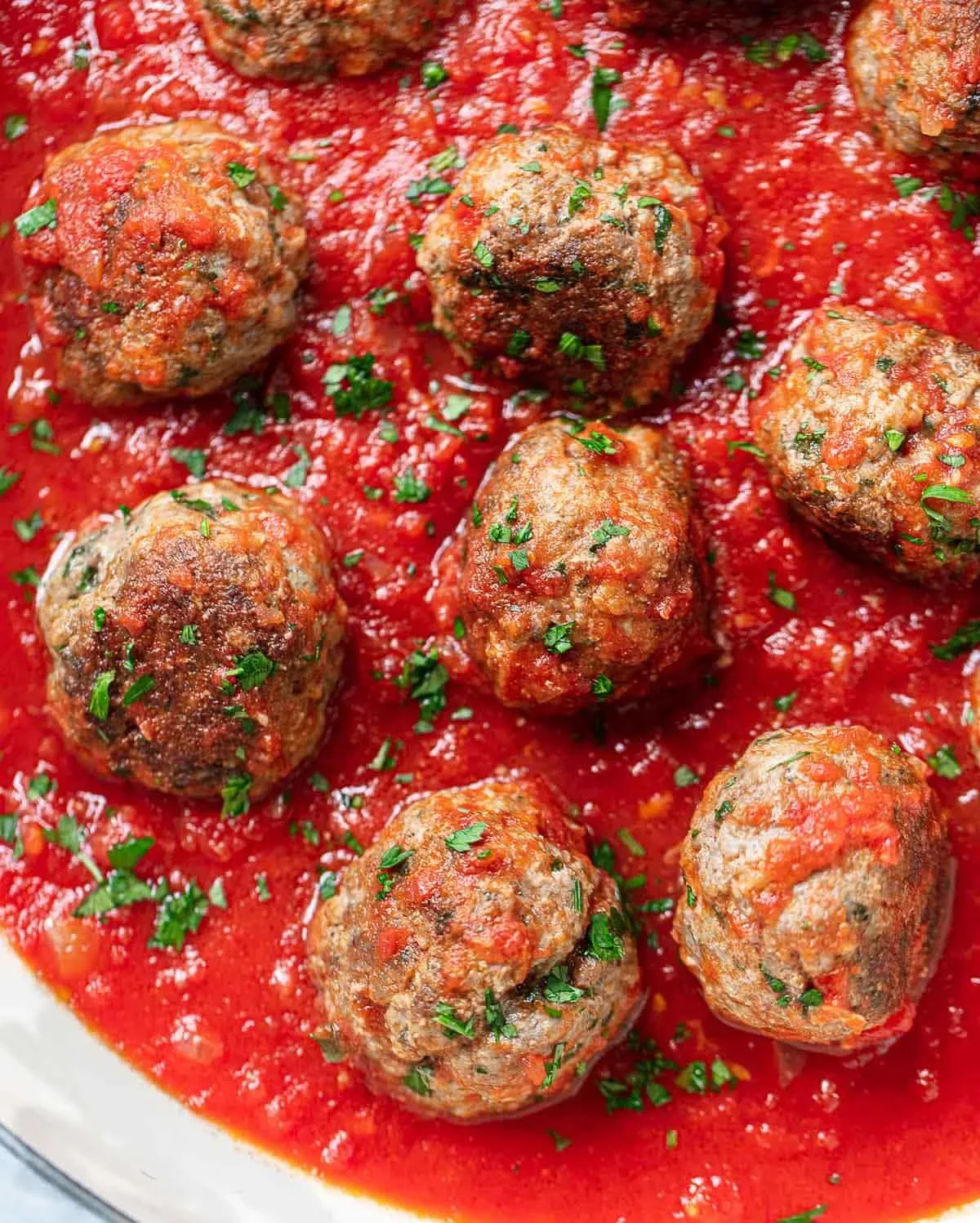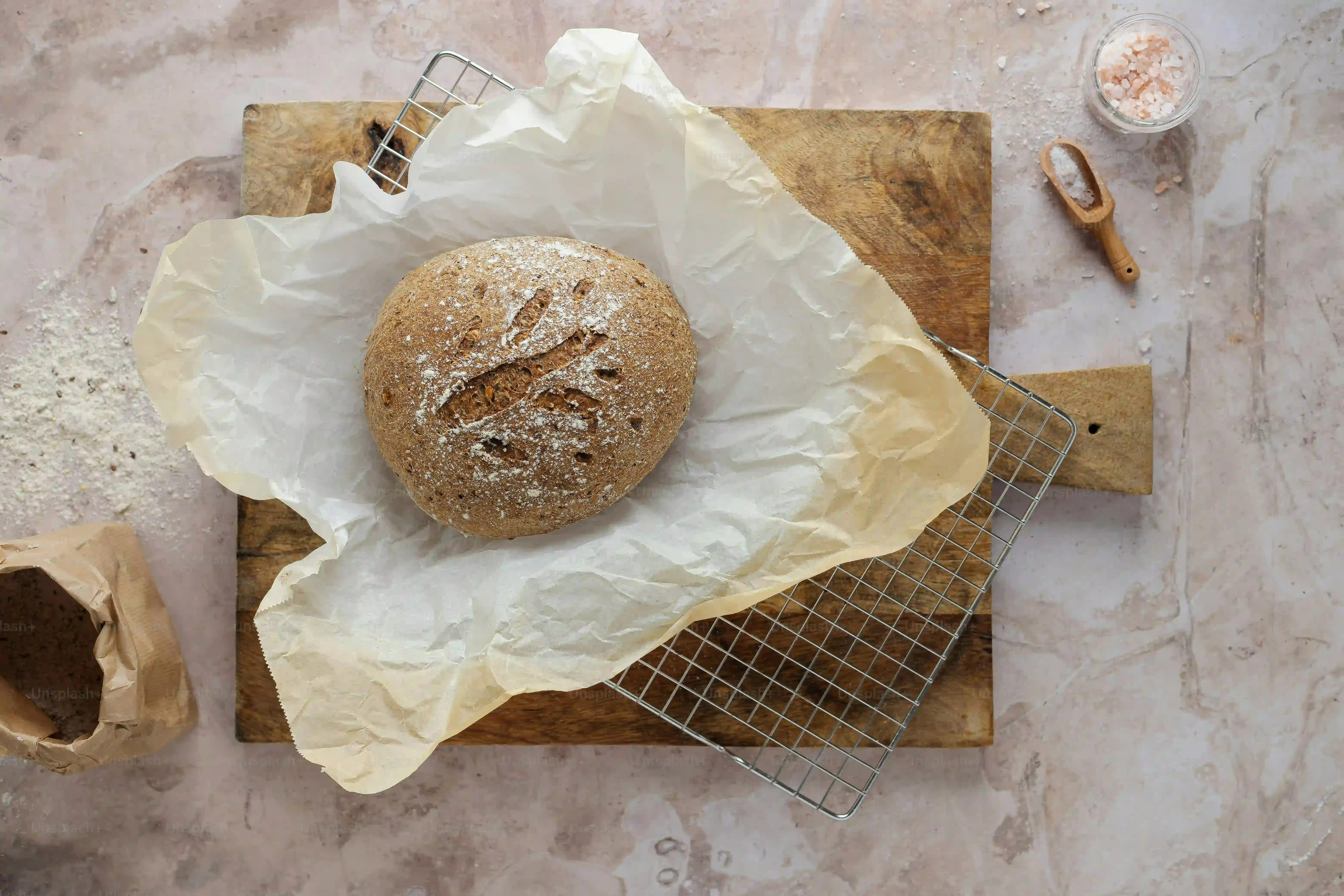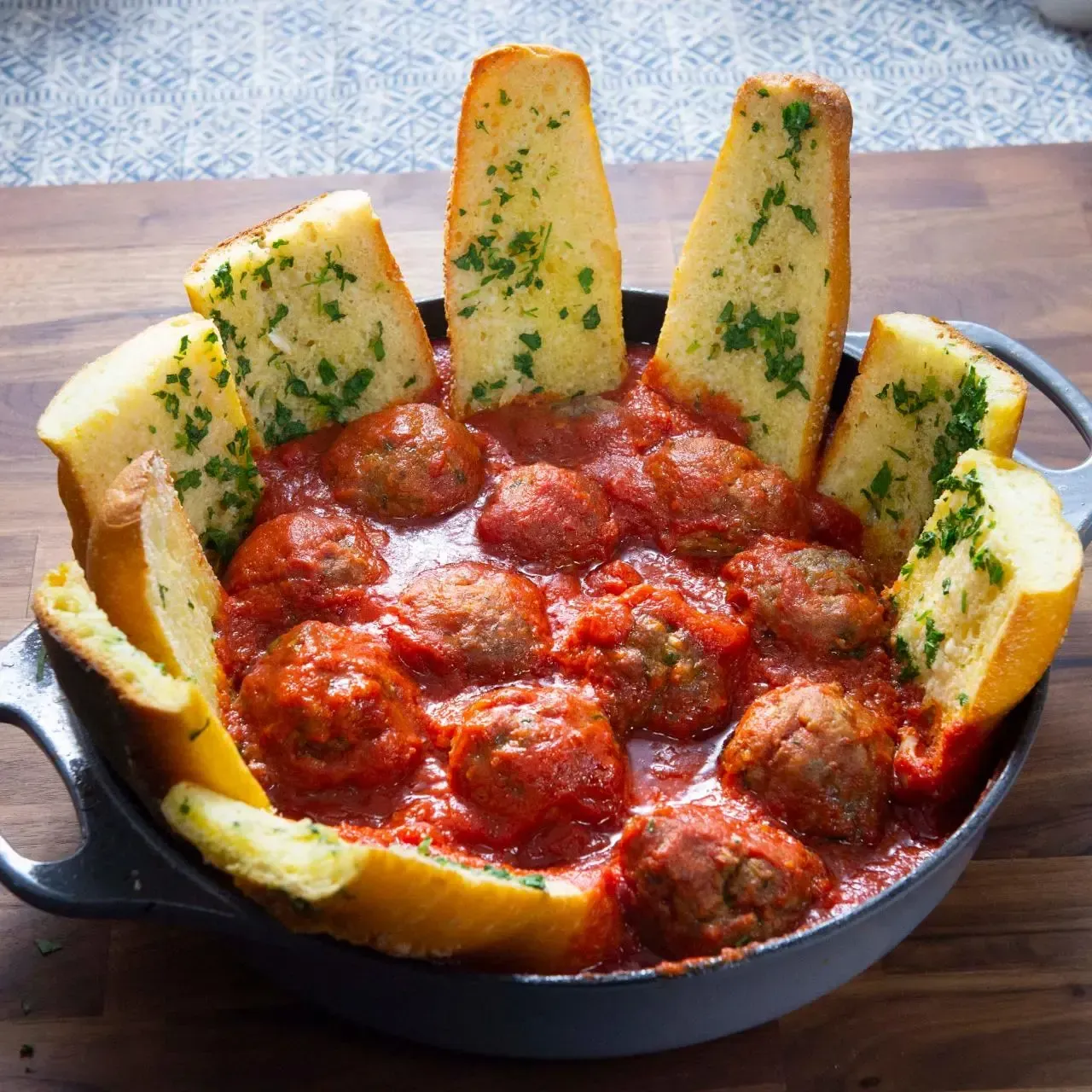Table of Contents
Ever bite into an Italian meatball hoping for a tender, juicy experience and instead get something resembling a bouncy ball? Yeah, we've all been there. The quest for the perfect, melt-in-your-mouth meatball can feel like chasing a culinary unicorn. Many home cooks grapple with dry, dense results, wondering where they went wrong. Often, the secret isn't some ancient family incantation, but something far simpler, and frankly, a little humble: bread.
Why Bread is the Secret Ingredient in an Italian Meatball Recipe

Why Bread is the Secret Ingredient in an Italian Meatball Recipe
It's All About Moisture Retention
let's get real. You've probably seen recipes that skip the bread or use just breadcrumbs straight from a box. And you've probably tasted the result: dry, heavy little pucks. The magic behind a truly tender italian meatball recipe with bread isn't just tradition; it's science. When you soak bread in milk or water, it creates a paste called a panade. This panade does a couple of critical things.
First, it adds moisture directly into the meat mixture. More importantly, as the meatballs cook, this hydrated bread holds onto that moisture, preventing the meat proteins from seizing up and squeezing out all their juices. Think of it as tiny little sponges distributed throughout the meat, ensuring every bite is succulent, not sawdusty.
The Binder That Doesn't Turn Them Into Bricks
Beyond just adding moisture, bread acts as a superior binder compared to just using eggs or dry breadcrumbs alone. Eggs help hold things together, sure, but too many can make the texture rubbery. Dry breadcrumbs absorb *some* liquid, but they don't integrate into the meat mixture in the same way a soaked panade does.
The panade creates a loose network throughout the meat. This keeps the meatballs from falling apart during cooking, whether you're frying, baking, or simmering them in sauce, but it doesn't pack them down into a dense, solid mass. It allows for a lighter, more delicate texture that still holds its shape. This is crucial for that classic, fork-tender bite.
- Panade adds moisture directly.
- It holds moisture during cooking.
- It acts as a binder without being dense.
- Results in a lighter texture.
Flavor Absorption and Distribution
There's another benefit to incorporating bread into your italian meatball recipe with bread: flavor. The panade isn't just a neutral base; it soaks up the flavors you add – garlic, onion, herbs, cheese, salt, pepper. As the meatballs cook, these flavors are distributed more evenly throughout the mixture because they're held within the bread structure.
Instead of pockets of intense flavor or bland spots, you get a consistent, savory experience in every single meatball. It’s like the bread acts as a tiny flavor reservoir, releasing those delicious notes as you eat. This is why using good quality bread makes a difference, though even simple white bread works wonders once soaked.
Ingredients You Need for Your Italian Meatball Recipe with Bread

Ingredients You Need for Your Italian Meatball Recipe with Bread
The Meat and the Essential Bread Component
Alright, let's talk ingredients. For a killer italian meatball recipe with bread, you can't just grab any old meat and bread. A classic calls for a mix of ground beef and pork. Beef provides that rich, savory base, while pork adds moisture and tenderness. Aim for an 80/20 blend (80% lean, 20% fat) for beef; anything leaner and you risk dryness. For pork, regular ground pork is fine.
Now, the star: the bread. Don't use dried, pre-made breadcrumbs here. Go for fresh or slightly stale bread. Crusty Italian or French bread works beautifully. You'll tear it into small pieces or cube it, then soak it in milk or water. Milk adds a touch more richness, but water is perfectly acceptable and keeps things dairy-free if needed. This is where that crucial panade happens.
Binders, Flavorings, and the Rest of the Crew
Beyond the meat and bread, you need ingredients to bind everything together and inject serious flavor. Eggs are standard binders, helping the mixture hold its shape. Use large eggs and don't go overboard; too many make the meatballs tough.
For flavor, think garlic (freshly minced, always), finely chopped onion (grated onion disappears better and adds moisture), fresh parsley, grated Parmesan or Pecorino Romano cheese, salt, and black pepper. Some folks add a pinch of red pepper flakes for a little kick, or a touch of dried Italian seasoning. These elements are non-negotiable for that authentic Italian taste.
Key Ingredients Checklist:
- Ground Beef (80/20 recommended)
- Ground Pork
- Fresh or Stale Bread
- Milk or Water (for soaking)
- Large Eggs
- Fresh Garlic (minced)
- Onion (finely chopped or grated)
- Fresh Parsley (chopped)
- Grated Parmesan or Pecorino Romano Cheese
- Salt
- Black Pepper
Mixing and Shaping Your Classic Italian Meatballs

Mixing and Shaping Your Classic Italian Meatballs
The Gentle Touch: Mixing and Shaping
Alright, you've got your gorgeous pile of ingredients ready for your italian meatball recipe with bread. Now comes the crucial part, and honestly, where many people mess up: mixing. Think of this stage less like kneading dough and more like gently persuading friends to hang out. You want to combine everything just enough so it sticks together, but absolutely do not overwork the mixture. Excessive handling develops the proteins in the meat, turning your potential cloud-like meatballs into something dense and tough. Start by adding your soaked bread (the panade), eggs, cheese, garlic, onion, herbs, salt, and pepper to the bowl with the ground meats. Use your hands – it’s the best tool here – and mix everything together with a light touch, almost lifting and folding, until the ingredients are evenly distributed. Once combined, it's time to shape. Roll the mixture gently between your palms into uniform balls, roughly the size of a golf ball. Don't pack them tightly; keep that light touch. This ensures they cook evenly and maintain that tender texture we're aiming for.
Cooking Methods for Your Italian Meatball Recipe

Cooking Methods for Your Italian Meatball Recipe
Get That Golden Crust: Pan-Frying First
So you've got your perfectly shaped, tender-promise meatballs ready from your italian meatball recipe with bread mixture. Now what? Pan-frying is the classic first step for a reason. It gives the meatballs a beautiful golden-brown crust, adding layers of flavor through the Maillard reaction. You don't need to cook them all the way through here; you're just building that exterior texture and color. Use a good quality olive oil or a neutral oil like canola in a large skillet over medium-high heat. Don't overcrowd the pan, or they'll steam instead of fry. Work in batches if necessary, turning them gently until they're browned on all sides. This step takes maybe 5-7 minutes per batch. They'll look tempting, but resist eating them raw – the cooking journey isn't over yet.
Low and Slow in the Oven: Baking for Ease
If standing over a hot stove flipping meatballs isn't your idea of fun, or if you're making a big batch of your italian meatball recipe with bread, baking is a fantastic, less messy alternative. Preheat your oven to around 375°F (190°C). Place your shaped meatballs on a baking sheet lined with parchment paper or foil for easy cleanup. You can bake them until they're cooked through, which usually takes about 20-25 minutes, or you can bake them just until they're browned on the outside (about 10-15 minutes) before transferring them to simmer in sauce. Baking gives them an even cook and is hands-off once they're in the oven. Plus, fewer grease splatters to wipe down later.
Which method is right for you?
- Pan-frying: Best for developing deep crust flavor, requires more attention.
- Baking: Easier for large batches, less mess, more even initial cooking.
Finishing in the Sauce: The Simmering Secret
Regardless of whether you pan-fried or baked them first, the crucial final step for most classic italian meatball recipe with bread preparations is simmering them gently in your favorite tomato sauce. This isn't just about heating them up; it's where the magic truly happens. The meatballs absorb the flavors of the sauce, and in turn, they release some of their delicious meaty goodness into the sauce, enriching it. This low, slow simmer also ensures the meatballs cook through completely and become incredibly tender. Drop your browned meatballs into simmering sauce, cover the pot, and let them hang out for at least 20-30 minutes, or even longer. The longer they simmer, the more tender and flavorful they become. Just don't let the sauce boil vigorously; a gentle bubble is all you need.
Serving Your Perfect Italian Meatballs: Pasta, Subs, and More

Serving Your Perfect Italian Meatballs: Pasta, Subs, and More
The Classic Pairing: Drowning Them in Sauce and Pasta
Alright, you've put in the work. You've mastered the panade, mixed gently, and simmered these beauties from your italian meatball recipe with bread in glorious red sauce. Now for the payoff. The most iconic way to serve these is, hands down, with pasta. Think spaghetti, linguine, rigatoni – something sturdy enough to cradle those tender orbs and soak up that rich, meaty sauce.
Drain your cooked pasta, add it directly to the pot with the simmering meatballs and sauce, and toss gently to coat everything. Serve immediately, maybe with a generous sprinkle of fresh basil or more grated Parmesan. It’s simple, comforting, and exactly what these meatballs were born to do.
What pasta pairs best with these perfect meatballs?
- Spaghetti: The undisputed champion.
- Rigatoni: Tube shape catches sauce beautifully.
- Linguine: A flatter noodle that works well.
- Penne: Another great option for scooping up sauce.
Beyond the Bowl: Meatball Subs and Other Adventures
While pasta is the default, don't limit yourself. Your fantastic italian meatball recipe with bread yields meatballs versatile enough for other culinary missions. A meatball sub is a thing of beauty: warm, crusty bread, loaded with meatballs, plenty of sauce, and melted cheese (provolone or mozzarella are solid choices). Toast the roll first, spoon in some sauce and meatballs, top with cheese, and pop it under the broiler until bubbly and golden.
These meatballs also make killer appetizers. Serve them on their own in a small dish of sauce with toothpicks. Or slice them and use them as a pizza topping. They're even good cold, sliced thinly for a quick sandwich. The possibilities are pretty open once you have a batch of these reliably tender meatballs ready to go.
Serving Idea | Description |
|---|---|
Meatball Sub | Meatballs and sauce on a toasted roll with melted cheese. |
Appetizer | Serve warm in sauce with toothpicks. |
Pizza Topping | Slice and scatter over pizza before baking. |
Quick Sandwich | Thinly sliced cold meatballs on bread. |
Mastering the Meatball: It's All About the Bread
So there you have it. The mystery of the dry, sad meatball is solved, and the hero, in this case, is simply some bread. No fancy equipment, no secret ingredient sourced from a mountain top – just understanding how to properly incorporate that binder. Stop fearing the mix; embrace the bread. Once you nail this italian meatball recipe with bread, you won't go back to those tough, rubbery impersonators. You'll have tender, flavorful meatballs ready for pasta night, a sub sandwich, or just eating straight from the pan (no judgment here). Go forth and make some proper meatballs.